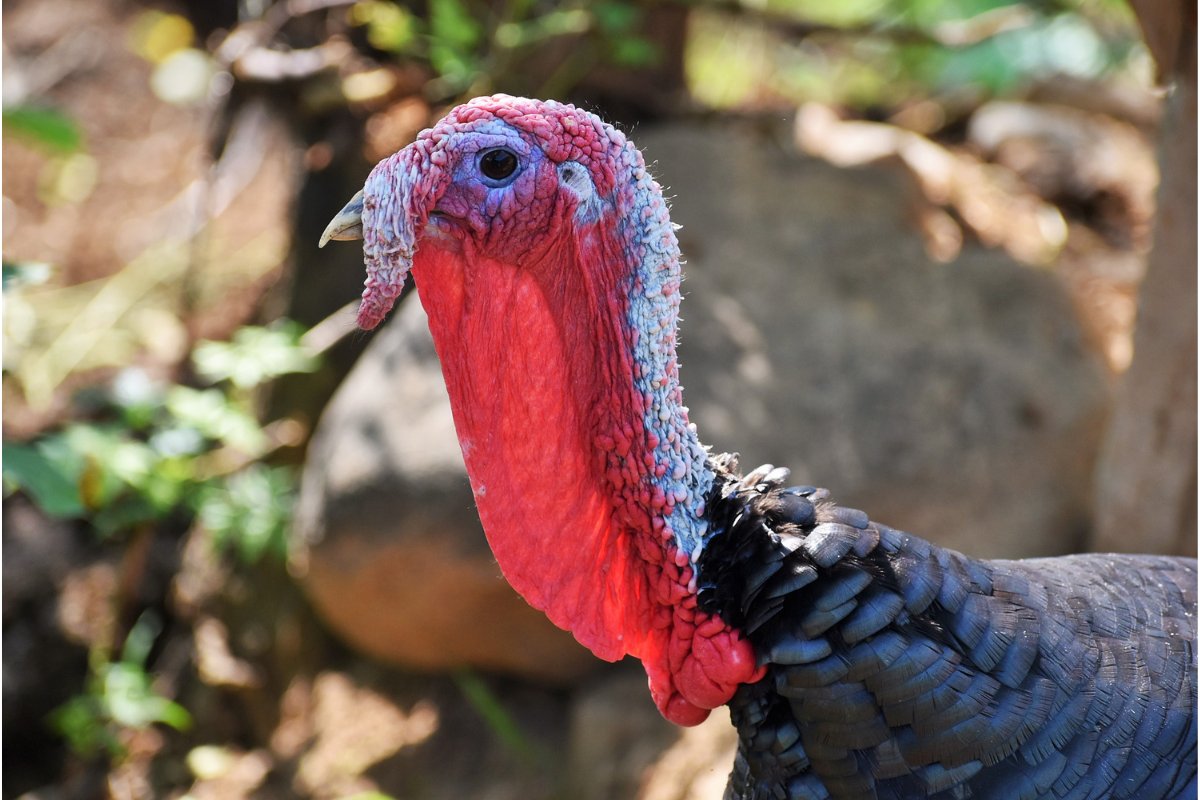Understanding The Snood On A Turkey: What Is A Snood On A Turkey

A snood on a turkey is the fleshy, elongated growth that dangles from its beak. This peculiar appendage serves a purpose beyond mere decoration. In the world of turkeys, the snood plays a crucial role in communication and mating rituals. Understanding what a snood is and its significance can provide fascinating insights into the behavior of these fascinating birds. Let’s delve deeper into the world of turkeys and uncover the secrets of their distinctive snood.
Understanding What is a Snood on a Turkey
Welcome, young explorers, to the fascinating world of turkeys! Have you ever wondered about those peculiar fleshy bits hanging from a turkey’s beak? Those are known as a “snood”! In this article, we will dive deep into the curious world of turkeys and unravel the mystery behind this intriguing feature. So, grab your magnifying glass, put on your detective hats, and let’s embark on this exciting journey to discover what exactly is a snood on a turkey!
The Basics of Turkeys
Before we delve into the specifics of a snood, let’s first understand a bit about turkeys themselves. Turkeys are fascinating birds that are native to North America. They are known for their distinctive gobble-gobble sound and colorful plumage. Turkeys come in various breeds and sizes, with the most famous being the wild turkey and domesticated turkey.
What Is a Snood?
Now, let’s get to the star of our show – the snood! A snood is a peculiar fleshy protuberance that dangles from the top of a turkey’s beak. It is a long, soft, and wrinkled appendage that can change color depending on the turkey’s mood. The snood is made of soft, elastic skin, and it serves a vital purpose in the life of a turkey.
The Function of a Snood
Despite its unusual appearance, the snood plays a crucial role in a turkey’s life. One of the primary functions of the snood is to attract potential mates during the breeding season. When a turkey is feeling excited or trying to impress a female turkey, the snood becomes engorged with blood, turning bright red or blue, signaling its readiness to breed.
Male turkeys, also known as toms, use their snoods as a way to display dominance and attract females. A larger, more colorful snood indicates a healthier and more genetically desirable mate, making it a sought-after feature during the mating season.
Protection and Communication
Aside from its role in mating, the snood also serves practical purposes. It helps protect a turkey’s beak from injuries and acts as a sensitive organ that can detect changes in the environment. Turkeys can extend or contract their snoods depending on their emotions and intentions, using them as a form of communication with other turkeys.
Snood Variations and Breeds
Not all turkeys have the same type of snood. Depending on the breed and gender, snoods can vary in size, shape, and color. Some turkeys have longer snoods that droop down past their beaks, while others have shorter, more upright snoods. Understanding these differences can help us appreciate the diversity within the turkey population.
Wild vs. Domesticated Turkeys
Wild turkeys, which are the ancestors of our domesticated turkeys, tend to have more prominent and colorful snoods. This is because in the wild, the snood plays a significant role in attracting mates and asserting dominance within the flock. Domesticated turkeys, on the other hand, have been selectively bred for specific traits, leading to variations in snood size and color.
Role of Snood in Turkey Behavior
Observing the behavior of turkeys can give us valuable insights into the importance of the snood. When turkeys are feeding, resting, or feeling content, their snoods may appear smaller and paler in color. However, during times of excitement, aggression, or courtship, the snood can quickly change, showcasing the turkey’s emotional state.
Protecting and Respecting Turkeys
As we learn more about the fascinating world of turkeys and their unique features like the snood, it is essential to remember the importance of respecting these incredible birds. Turkeys are intelligent, social creatures that play a vital role in maintaining the balance of their ecosystems. By understanding and appreciating their natural behaviors and characteristics, we can ensure their well-being and conservation for generations to come.
So, the next time you spot a turkey strutting around with its colorful snood on display, remember the remarkable story behind this fascinating feature and the role it plays in the life of these magnificent birds. Happy turkey-tales, young explorers!
Thank you for joining us on this adventure to unravel the mystery of what a snood is on a turkey. We hope you’ve enjoyed this journey into the intriguing world of turkeys and their unique traits. Until next time, keep exploring and learning about the wonders of nature!
What is a snood on a turkey?
Frequently Asked Questions
What purpose does a snood serve on a turkey?
A snood is a fleshy, elongated growth on the head of a turkey that serves multiple purposes. It can change color and length based on the turkey’s emotional state. The primary function of a snood is to indicate the bird’s health and stress levels. It also plays a role in courtship behavior and helps attract potential mates.
How does a snood help a turkey with feeding?
A turkey’s snood contains specialized blood vessels that expand to increase blood flow, making it more prominent. This increased blood flow helps regulate the bird’s body temperature, especially in hot weather. Additionally, the snood contains sensory receptors that assist the turkey in finding food and assessing its surroundings, improving its foraging abilities.
Can the size of a turkey’s snood indicate its age?
While the size of a turkey’s snood can vary based on the individual’s genetic factors and health condition, it is not a reliable indicator of age. Factors such as gender, diet, and overall health can influence the length and color of a turkey’s snood. Thus, it is not accurate to determine a turkey’s age solely based on the size of its snood.
How does the appearance of a snood change during different turkey activities?
During various activities, a turkey’s snood can change in size, color, and texture. For instance, when a turkey is relaxed or content, the snood may appear shorter and paler. In contrast, when the bird is agitated or excited, the snood can elongate and become more vibrant in color. These changes in the snood’s appearance help communicate the turkey’s mood and social status to other birds within the flock.
Final Thoughts
The snood on a turkey is the fleshy, elongated growth on top of its beak. It serves various functions, including signaling the turkey’s emotional state and attracting potential mates. Understanding what a snood is on a turkey can provide insight into its behavior and physiology. Through observing and learning about this unique feature, we gain a deeper appreciation for the complexity of these fascinating birds.





